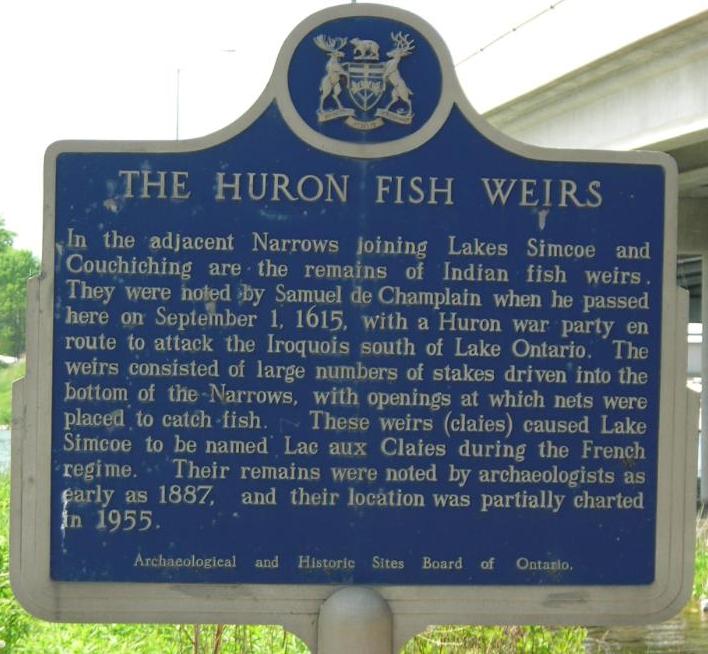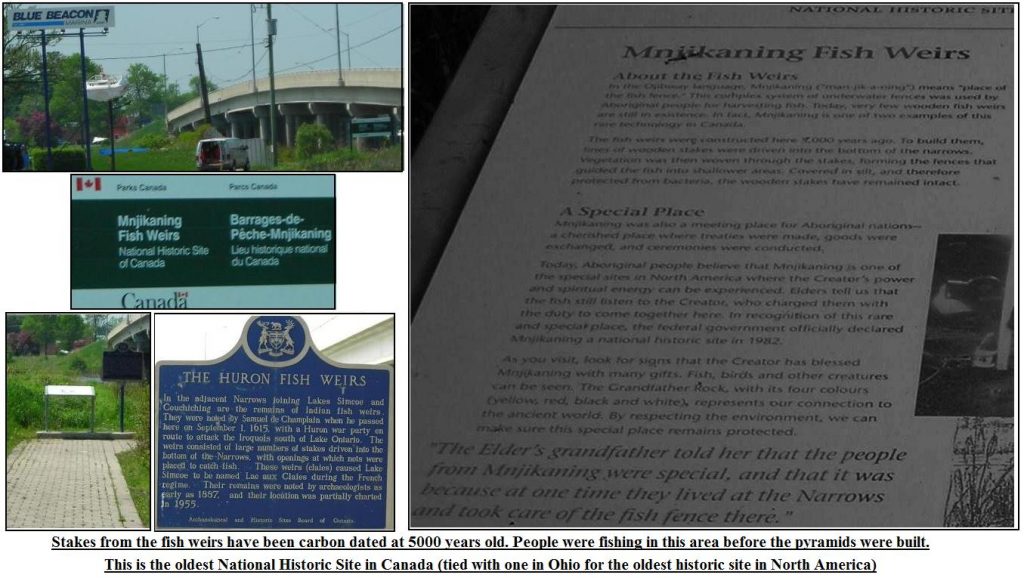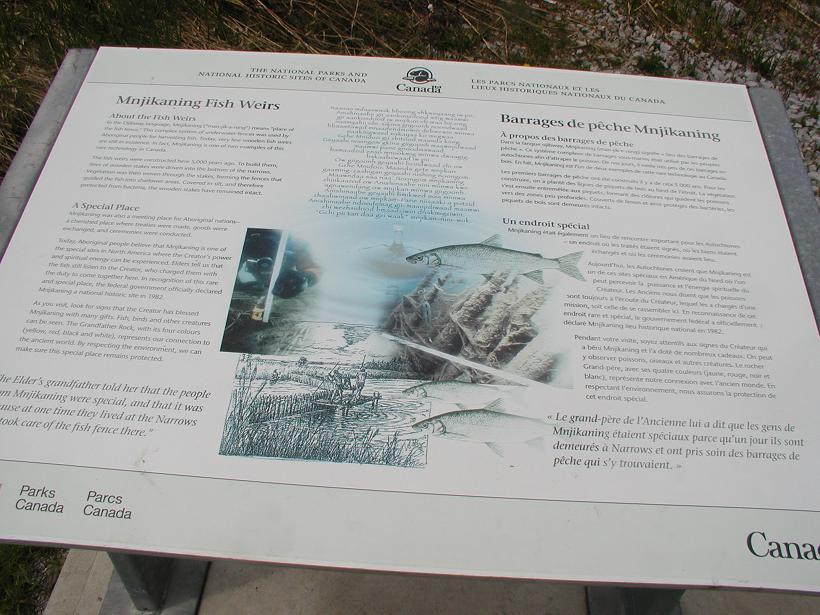Mnjikaning Fish Weirs
Built in the narrows between Lake Couchiching and Lake Simcoe
The Mnjikaning Fish Weirs are one of the oldest human developments in Canada. These fishing weirs were built by the first nations people well before recorded history: so far back that they actually pre-date the Great Pyramid of Cheops in Giza (erected 2560 BC) according to carbon dating done on some of the wooden remnants. The weirs were built in the narrows between Lake Couchiching and Lake Simcoe where today’s Ontario Highway 12 passes over. They were preserved by the water and layers of protective silt.
The weirs were built as fences to help encircle the various fish species that would faithfully end up within the traps. These early fishermen wove brush and vegetation among the weirs to make net-like fencing where the fish were guided to be speared, netted or kept for later use.
They were in use for 5000 years, right up until World War II. Champlain noted their existence on Sept 1, 1615, when he passed here with the Huron en route to the battle with the Iroquois on the south east side of Lake Ontario.



